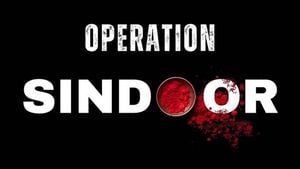On December 11, 2024, the Institute for the Study of War (ISW) reported troubling developments around the Ukrainian city of Pokrovsk, as Russian forces made significant advances, bringing them perilously close to this strategic position. The intensity of the fighting has escalated dramatically, with Russian troops reportedly locating themselves within just six kilometers from Pokrovsk, largely due to persistent offensives aimed at breaching Ukrainian defenses.
The city of Pokrovsk, which serves as a key supply hub for Ukrainian forces, has become the focal point of the fierce conflict between Ukrainian and Russian troops. Analysts have highlighted the importance of Pokrovsk not merely as a tactical stronghold but also due to its logistical significance, particularly for supplying materials needed for Ukraine’s armed efforts.
Colonel Nazar Voloshyn, spokesperson for the Ukrainian Khortytsia Group of Forces, stated on December 11, "Russian forces attacked our fortifications west of Novyi Trud and South of Novotroitske. We lost two key positions during these aggressive maneuvers but are committed to regaining them."
This escalation isn't just about territory; it's also about the rising casualty rates. Ukrainian reports indicate Russian forces faced about 3,000 personnel losses over two weeks, indicating both sides are embroiled in a costly conflict. A Ukrainian battalion commander recounted the situation as “critical,” highlighting the intensity of the Russian attacks, which occur up to 30 times daily backed by artillery advantage.
While both sides are making substantial sacrifices, the ISW carefully points out the potential long-term consequences of continuing losses on Russia's already overstretched military resources. "Continued Russian losses at this scale will impose mounting costs on Russia’s force generation apparatus. Even as they make tactical gains, these losses could hinder their ability for broader offensive operations," the Institute noted.
Recent footage and battlefield assessments indicate effective Russian maneuvers have brought them closer to Pokrovsk by capturing strategic locations to the south, creating pressure on Ukrainian defenses. The relentless Russian drive to secure territory reveals the challenging environment for Ukrainian forces, who are now facing not only tactical setbacks but increasing internal pressures and morale challenges within their ranks.
Despite the dire circumstances, Ukrainian military commanders express resolve. They are currently adapting to the fluid situation, using strategic retreats where necessary to maintain their overall positioning and counter the intense Russian advances. Federal support from Western nations plays a pivotal role, with Ukraine receiving military aid aimed at fortifying their defenses.
General Oleksandr Syrskyi, the head of the Ukrainian military mentioned, "We must make unconventional decisions to bolster our defenses and outmaneuver our adversaries. The battles are exceptionally fierce; we face such mobility and manpower advantages from the enemy. It is imperative we adapt swiftly to maintain our position."
Meanwhile, concerns are growing over the broader strategic impacts of the battles near Pokrovsk. Should the city fall to Russian forces, it would not only mark a significant military loss for Ukraine but could substantially disrupt supply lines and destabilize their defensive capabilities across eastern Ukraine. Such outcomes could have immediate repercussions on the logistical chain for Ukrainian military operations across different fronts.
Analysts have also pointed out the timing of the offensive, with speculations about the Kremlin's intentions to consolidate territorial gains before geopolitical conversations shift with new political changes anticipated globally, particularly with the incoming U.S. administration.
Russia's stated objectives extend beyond mere territorial acquisition; they seem to be part of broader goals aimed at restoring perceived regional influence and leveraging negotiations from positions of strength. Observers note the complexity of the situation, marked by rising diplomatic tensions and the potential reshaping of alliances as military dynamics evolve.
Western intelligence sources have indicated by December 11, there were fears of additional missile strikes against Ukraine. Reports mentioned the potential for new attacks involving the Oreshnik missile system, signalling Russia's commitment to its artillery strategy as tensions continue to heighten.
The scene is set for continued conflict, and as both sides brace for renewed fighting, the cold winter months may only exacerbate the already dire humanitarian conditions present along the frontline. Indeed, as the situation remains fluid and complex, the hopes of peace remain distant, engulfed under the heavy toll of war.
Ukrainian forces, though currently under intense pressure, continue to exhibit resilience, echoing the determination to protect their sovereignty. The international community watches closely, with their responses and involvement likely to shape the course of this enduring and complex conflict.
With each day, the stakes grow ever higher around Pokrovsk, allowing the recent advances to be more than mere tactical progress; they represent the shifting paradigm of an enduring struggle within Ukraine's fight for independence.
What remains now is to see how both forces continue to adapt and the lengths to which they will go to either maintain or seize control of this strategically important piece of territory, as the echoes of artillery fire punctuate the stark winter air.
The battle for Pokrovsk can be seen as emblematic of the greater confrontation happening across the Donetsk region, as entrenched positions are relentlessly combated with the toll of human lives weighing heavily on both sides. The ultimate question remains how long this attritional battle can go on and at what cost it will finally yield results for either side involved.



